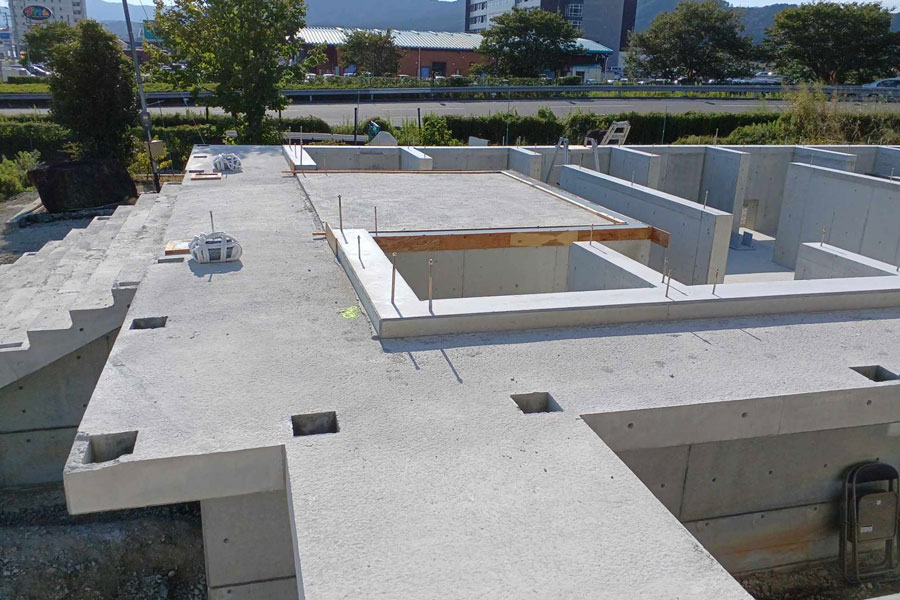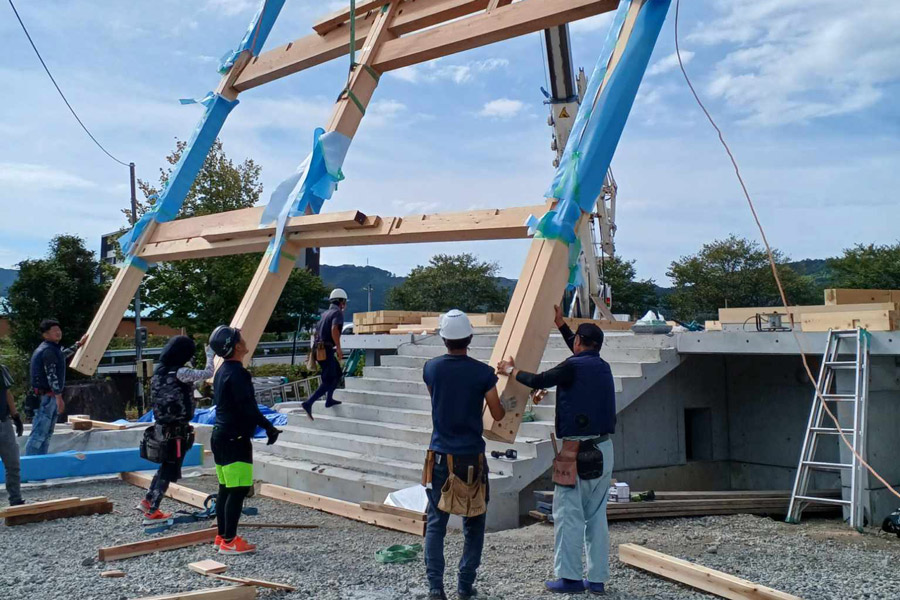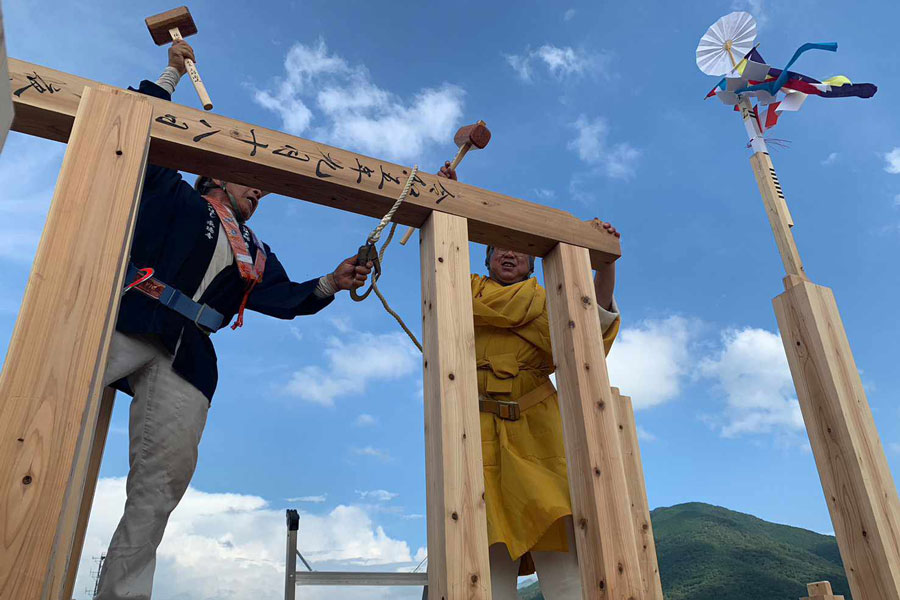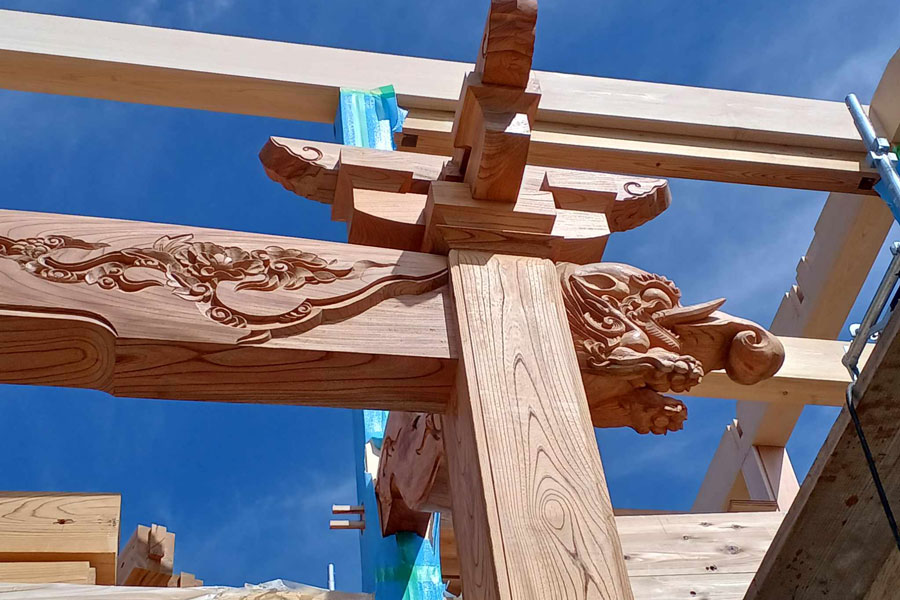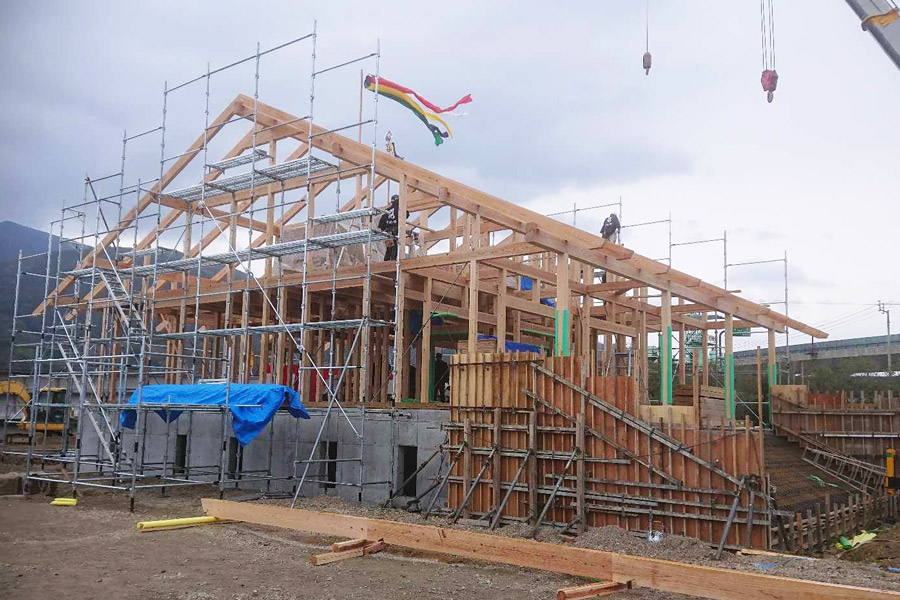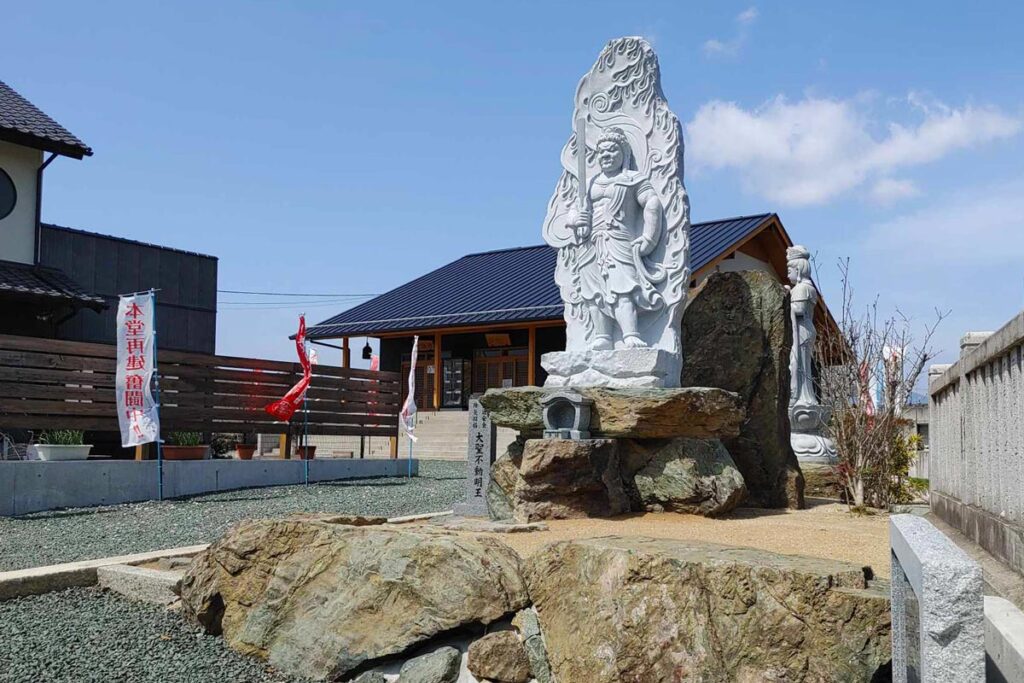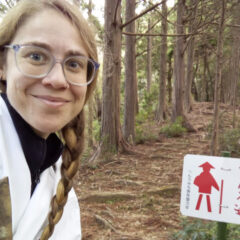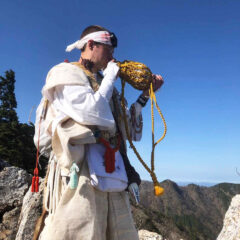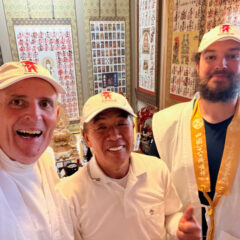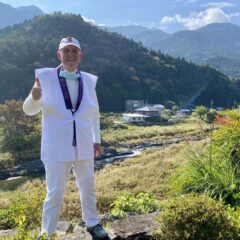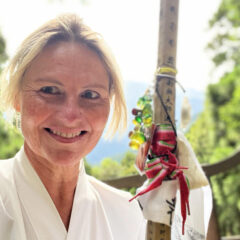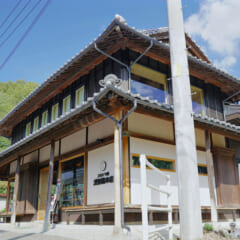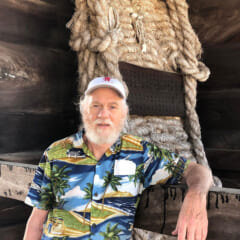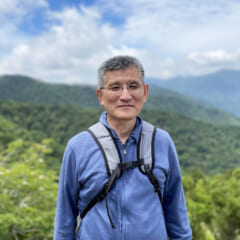Shikoku Pilgrims’ Helpers (5)Sendatsu, Mr. Nakata
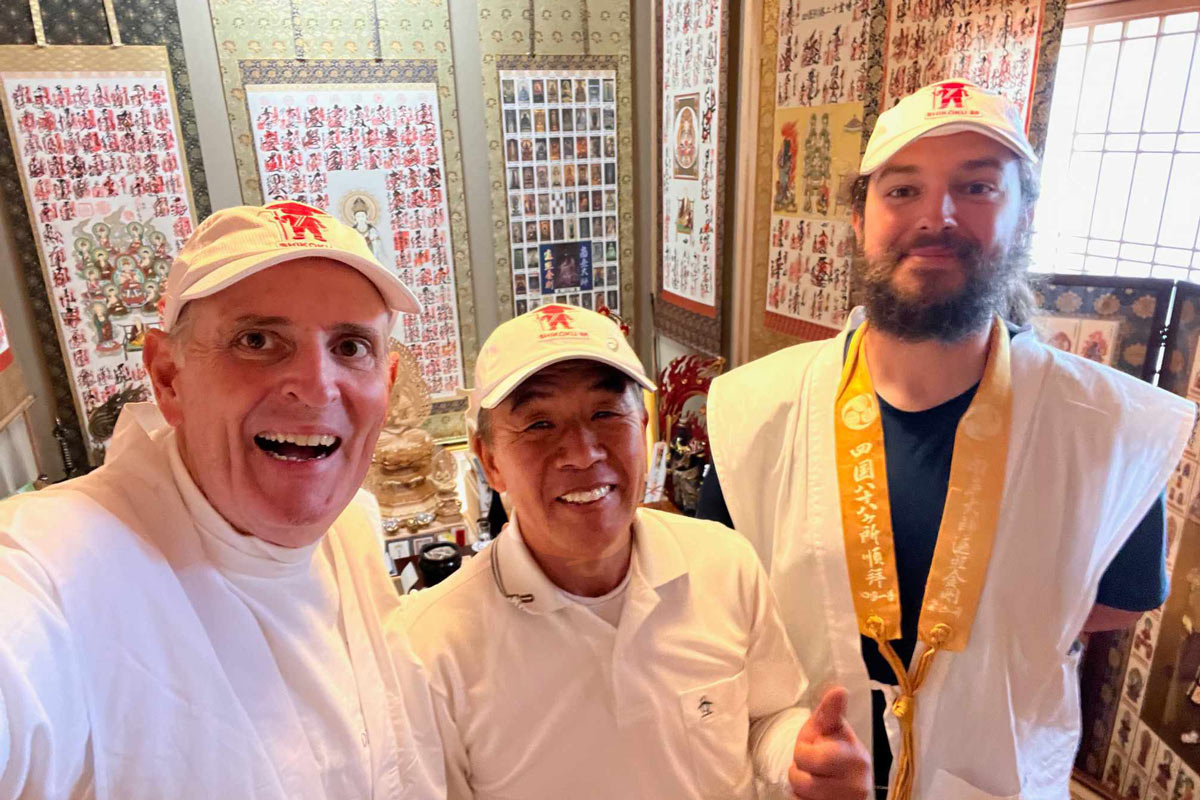
Let us reintroduce Mr. Nakata (pictured in the center above), who was featured in Raymond’s essay, “Encounter on the pilgrimage — Master Nakata.” Mr. Nakata is a guide residing near Temple 47, Yasaka-ji, in Ehime Prefecture. Since his first Shikoku pilgrimage in 1988, he has been captivated by its allure, becoming a guide for the Shikoku 88 Temple Pilgrimage in 2015, the Shikoku Bekkaku 20 Temple Pilgrimage in 2016, and later for the Shikoku 36 Fudo-son Pilgrimage and the Saigoku 33 Kannon Pilgrimage in 2020. This seasoned pilgrim has shared a heartfelt message.
Guides, known as ‘”Sendatsu” in Japanese, are certified individuals officially recognized by each temple association. They provide guidance on etiquette, rituals, and the rules of the pilgrimage to newcomers. Moreover, they serve as mentors to provide spiritual guidance. To become a certified guide, one must fulfill specific conditions set by each temple association, including multiple pilgrimages, recommendations, evaluations, and training.
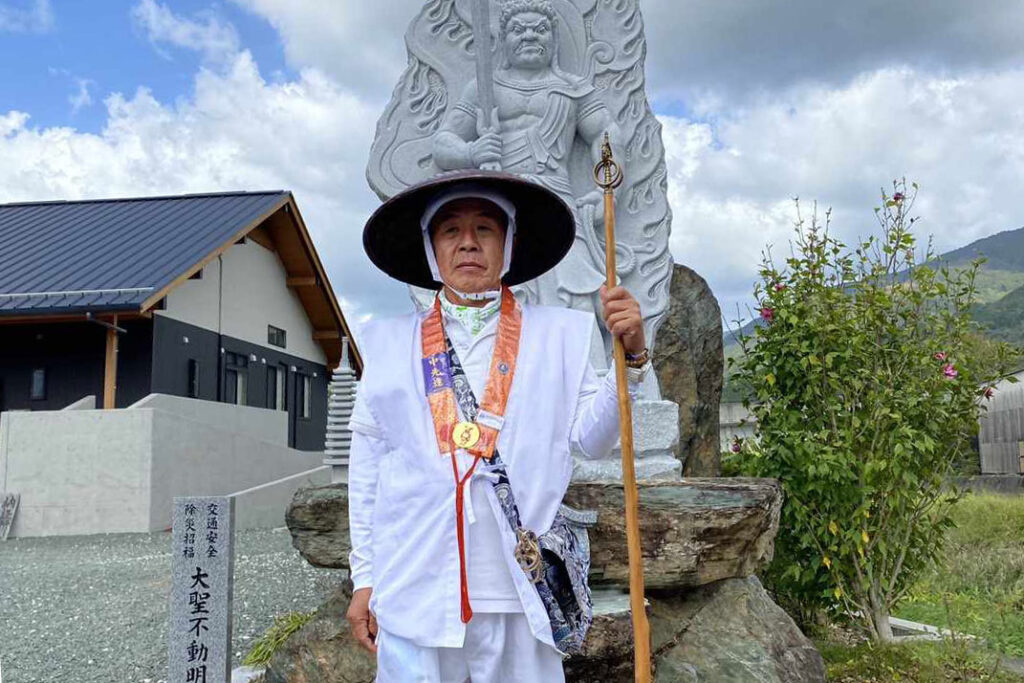
![]() Ikio Nakata
Ikio Nakata ![]() Completing the Shikoku Pilgrimage Multiple Times
Completing the Shikoku Pilgrimage Multiple Times
With a heart full of gratitude and thanksgiving,
I first experienced the Shikoku pilgrimage in 1988. Subsequently, I joined pilgrimage experience tours to learn the know-how of being a pilgrim. My serious pilgrimage journey began in 2009, prompted by my mother’s passing, as a way to offer prayers for her. As I explored, I discovered there were sacred places beyond the Shikoku 88 Temples, leading me to visit various regions, including Kyushu, Chugoku, Tohoku, and the Kanto area. In total, I have visited 20 pilgrimage sites. Currently, I am on my 60th round of the Shikoku 88 Temple Pilgrimage, 20th round of the Shikoku Bekkaku 20 Temple Pilgrimage, 10th round of the Shikoku 36 Fudo-son Pilgrimage, and 8th round of the Iyo 13 Buddha Pilgrimage.
Being a pilgrim has allowed me to meet fellow pilgrims from all over Japan and abroad, forging friendships and valuable connections. As a guide, I strive to share the etiquette, rituals, and customs of pilgrimage with newcomers, hoping to lead as many pilgrims as possible with a heart full of gratitude and thanksgiving, earning their appreciation for the Shikoku pilgrimage.
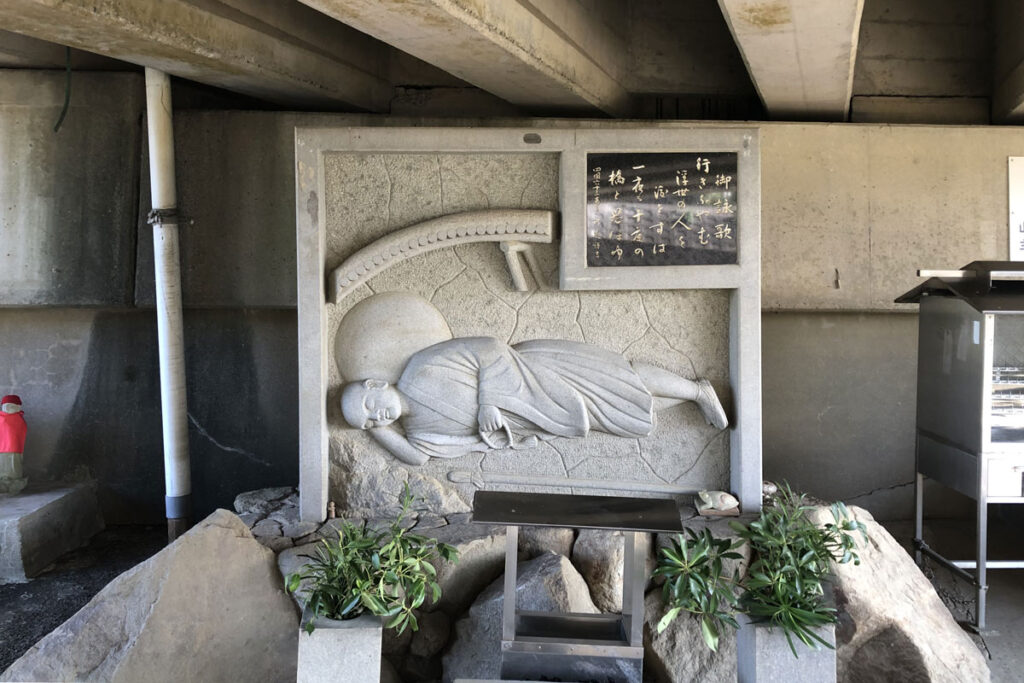
Recently, I had a profound experience at Eitoku-ji, the 8th temple of the Shikoku Bekkaku 20 Temple Pilgrimage.
Eitoku-ji, located near Toyogabashi Bridge, is said to be the place where Kobo Daishi practiced during his journey in Shikoku over 1,200 years ago. It is believed that pilgrims should not tap their staffs when crossing the bridge, as it may disturb Kobo Daishi, who once camped under the bridge at dusk.
In 2018, due to the heavy rainfall disaster in Western Japan, Eitoku-ji suffered significant damage, with the main hall, Daishi hall, and living quarters partially collapsing. The main hall had to be dismantled. To preserve this historic pilgrimage site, a reconstruction committee was formed.
During my pilgrimage, I had developed a close relationship with the chief priest of Eitoku-ji, Mr. Miyoshi. While applying for the guide certification for the Bekkaku 20 Temples, I submitted it through Eitoku-ji. Due to this connection, I was approached to join the reconstruction committee, and I accepted.
When it came time to begin reconstruction, we struggled with the budget, and local construction firms were unable to meet our financial needs. At that moment, I revealed, “Actually, I am a carpenter.” Everyone was surprised, as I had not disclosed my profession to the priest and other committee members until then.
From that point on:
- May 2020: Completion of the guest hall and temple office area
- May 2023: Completion of the priest’s living quarter
- June 2023: Commencement of the main hall construction
- We are currently working tirelessly towards the completion of the main hall in March 2024.
Being entrusted with the entire construction of this venerable pilgrimage site, Toyogabashi Bridge, is both an honor and an overwhelming experience.
